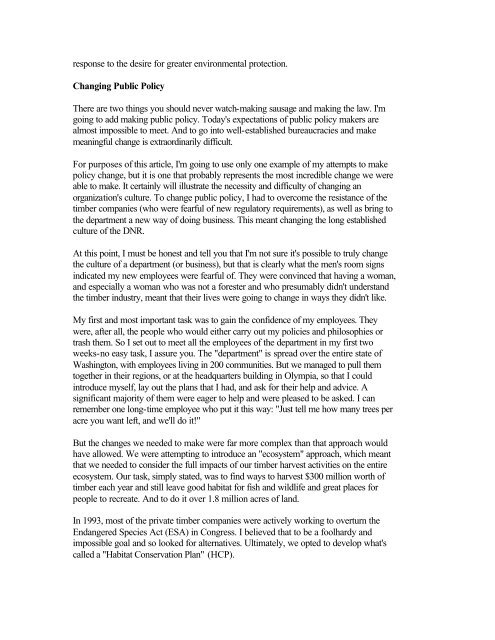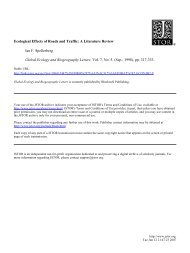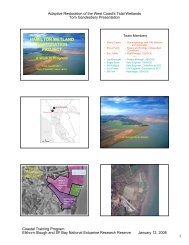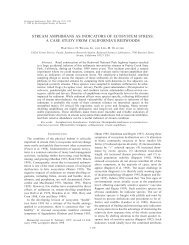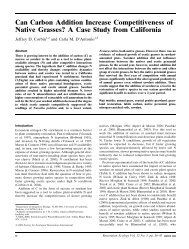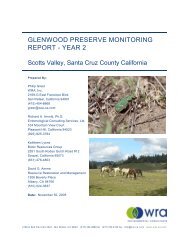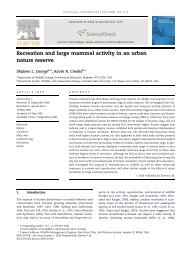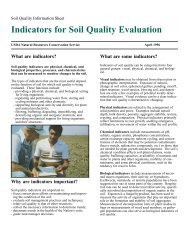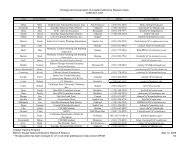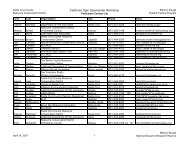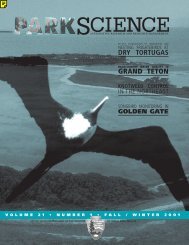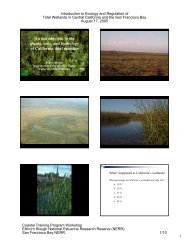Turning the Ship Around Changing the policies and culture of a ...
Turning the Ship Around Changing the policies and culture of a ...
Turning the Ship Around Changing the policies and culture of a ...
Create successful ePaper yourself
Turn your PDF publications into a flip-book with our unique Google optimized e-Paper software.
esponse to <strong>the</strong> desire for greater environmental protection.<br />
<strong>Changing</strong> Public Policy<br />
There are two things you should never watch-making sausage <strong>and</strong> making <strong>the</strong> law. I'm<br />
going to add making public policy. Today's expectations <strong>of</strong> public policy makers are<br />
almost impossible to meet. And to go into well-established bureaucracies <strong>and</strong> make<br />
meaningful change is extraordinarily difficult.<br />
For purposes <strong>of</strong> this article, I'm going to use only one example <strong>of</strong> my attempts to make<br />
policy change, but it is one that probably represents <strong>the</strong> most incredible change we were<br />
able to make. It certainly will illustrate <strong>the</strong> necessity <strong>and</strong> difficulty <strong>of</strong> changing an<br />
organization's <strong>culture</strong>. To change public policy, I had to overcome <strong>the</strong> resistance <strong>of</strong> <strong>the</strong><br />
timber companies (who were fearful <strong>of</strong> new regulatory requirements), as well as bring to<br />
<strong>the</strong> department a new way <strong>of</strong> doing business. This meant changing <strong>the</strong> long established<br />
<strong>culture</strong> <strong>of</strong> <strong>the</strong> DNR.<br />
At this point, I must be honest <strong>and</strong> tell you that I'm not sure it's possible to truly change<br />
<strong>the</strong> <strong>culture</strong> <strong>of</strong> a department (or business), but that is clearly what <strong>the</strong> men's room signs<br />
indicated my new employees were fearful <strong>of</strong>. They were convinced that having a woman,<br />
<strong>and</strong> especially a woman who was not a forester <strong>and</strong> who presumably didn't underst<strong>and</strong><br />
<strong>the</strong> timber industry, meant that <strong>the</strong>ir lives were going to change in ways <strong>the</strong>y didn't like.<br />
My first <strong>and</strong> most important task was to gain <strong>the</strong> confidence <strong>of</strong> my employees. They<br />
were, after all, <strong>the</strong> people who would ei<strong>the</strong>r carry out my <strong>policies</strong> <strong>and</strong> philosophies or<br />
trash <strong>the</strong>m. So I set out to meet all <strong>the</strong> employees <strong>of</strong> <strong>the</strong> department in my first two<br />
weeks-no easy task, I assure you. The "department" is spread over <strong>the</strong> entire state <strong>of</strong><br />
Washington, with employees living in 200 communities. But we managed to pull <strong>the</strong>m<br />
toge<strong>the</strong>r in <strong>the</strong>ir regions, or at <strong>the</strong> headquarters building in Olympia, so that I could<br />
introduce myself, lay out <strong>the</strong> plans that I had, <strong>and</strong> ask for <strong>the</strong>ir help <strong>and</strong> advice. A<br />
significant majority <strong>of</strong> <strong>the</strong>m were eager to help <strong>and</strong> were pleased to be asked. I can<br />
remember one long-time employee who put it this way: "Just tell me how many trees per<br />
acre you want left, <strong>and</strong> we'll do it!"<br />
But <strong>the</strong> changes we needed to make were far more complex than that approach would<br />
have allowed. We were attempting to introduce an "ecosystem" approach, which meant<br />
that we needed to consider <strong>the</strong> full impacts <strong>of</strong> our timber harvest activities on <strong>the</strong> entire<br />
ecosystem. Our task, simply stated, was to find ways to harvest $300 million worth <strong>of</strong><br />
timber each year <strong>and</strong> still leave good habitat for fish <strong>and</strong> wildlife <strong>and</strong> great places for<br />
people to recreate. And to do it over 1.8 million acres <strong>of</strong> l<strong>and</strong>.<br />
In 1993, most <strong>of</strong> <strong>the</strong> private timber companies were actively working to overturn <strong>the</strong><br />
Endangered Species Act (ESA) in Congress. I believed that to be a foolhardy <strong>and</strong><br />
impossible goal <strong>and</strong> so looked for alternatives. Ultimately, we opted to develop what's<br />
called a "Habitat Conservation Plan" (HCP).


